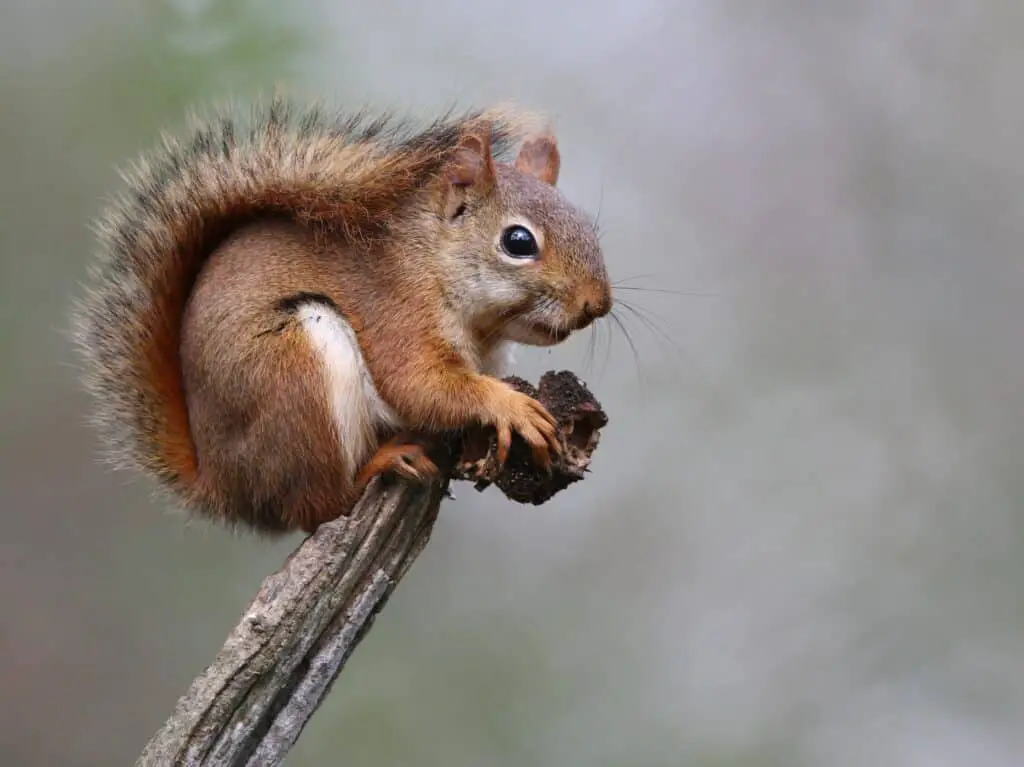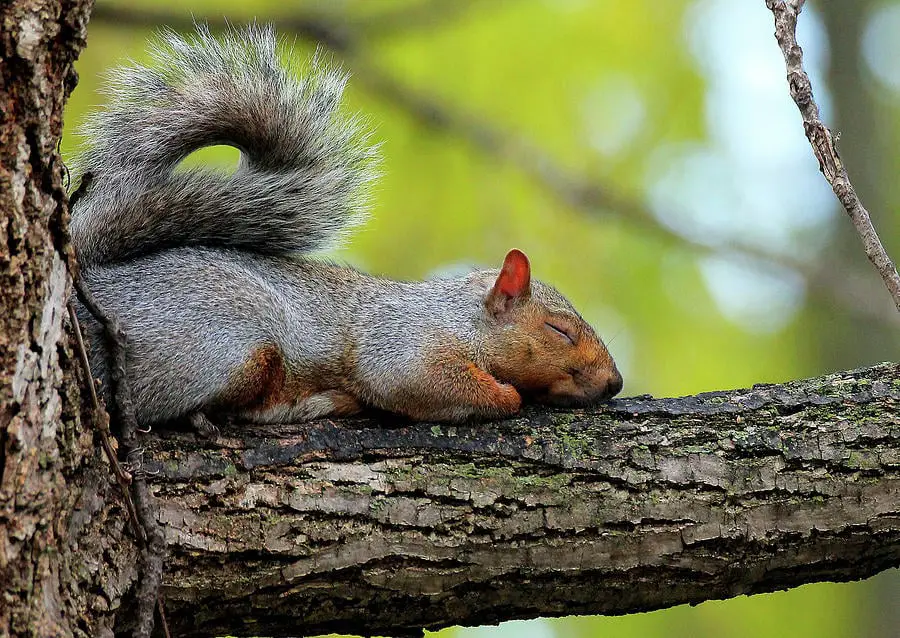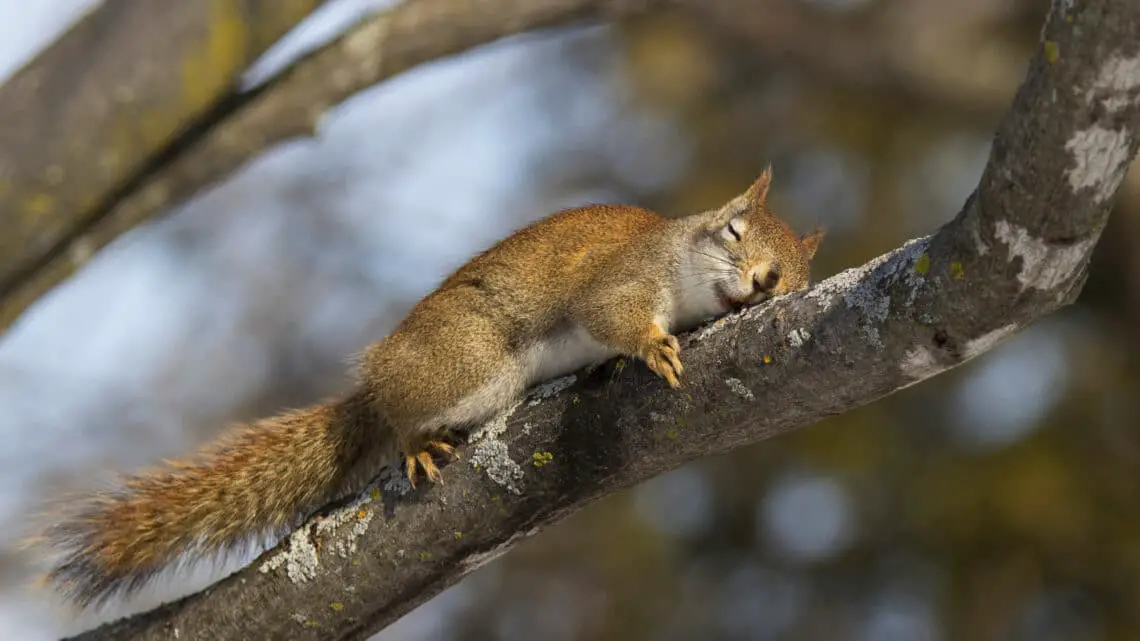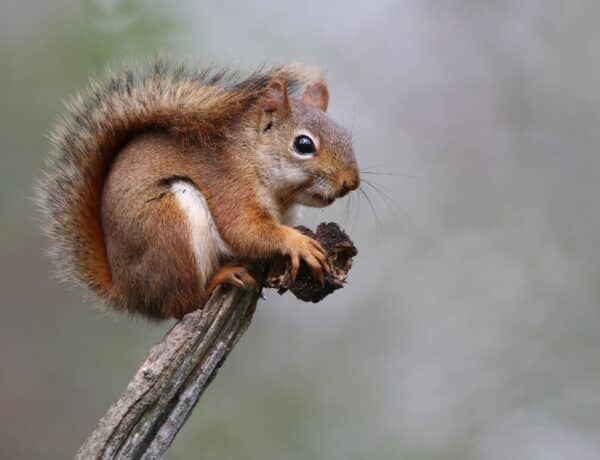Introduction
Where Do Squirrels Sleep: Squirrels, those agile and furry acrobats of the animal kingdom, have captured the fascination of humans for centuries with their boundless energy, quick wit, and bushy tails. While these captivating creatures are known for their ceaseless foraging, acorn hoarding, and gravity-defying leaps from tree to tree, there’s one aspect of their lives that often goes unnoticed: their sleeping habits and where they choose to rest their tiny heads at night. The life of a squirrel is a constant flurry of activity. From dawn till dusk, they scuttle up and down trees, leap across branches with astounding grace, and tirelessly search for food to sustain their high-energy lifestyles. However, just like humans, squirrels need their beauty sleep, too.
To uncover the mystery of where squirrels sleep, one must delve into the intricate world of these charismatic rodents. Squirrels babies are known for their adaptability and resourcefulness when it comes to their choice of lodging. Unlike many other animals that rely on fixed homes, squirrels are not confined to a single residence. Instead, they employ a variety of nesting sites, depending on the season and their immediate needs. From treetop nests to underground burrows, squirrels are masterful architects, each choice tailored to safety, warmth, and protection from predators.
This is deep into the fascinating realm of squirrel sleep patterns and their preferred nesting spots, shedding light on the secret lives of these creatures that often share our neighborhoods and woodlands. It will uncover the intricacies of squirrel behavior, their adaptations to different environments, and the vital role their sleeping habits play in their survival. So, prepare to embark on a journey through the treetops and underground hideaways as we unravel the age-old.

How long do squirrels need to sleep?
Squirrels like many small mammals are ‘crepuscular’ which means they are particularly active for a couple of hours in the early mornings and late afternoons but during the main body of the day can sleep for as much as 18 to 20 hours.
Firstly, squirrels have a high metabolic rate. This means they burn energy quickly, especially when engaged in activities like climbing, leaping, and running. To replenish their energy reserves, they require longer periods of rest. Their diet, which primarily consists of nuts, seeds, and fruits, may require more extended rest periods to aid in digestion and nutrient absorption.
Secondly, squirrels’ sleep patterns can vary with the seasons. During the harsh winter months, when food becomes scarcer and the weather turns frigid, squirrels may enter a state of torpor—a form of hibernation. Torpor allows them to conserve energy by drastically reducing their metabolic rate and lowering their body temperature. While in torpor, squirrels may sleep for days or even weeks at a time, depending on environmental conditions.
Squirrel sleep patterns can also be influenced by their age and reproductive status. Young squirrels and nursing mothers, for example, tend to sleep more than adult squirrels. This extra sleep is essential for the growth and development of the young, as well as for the energy demands of lactation.
Where do squirrels go in the winter in Canada?
burrow
As winter approaches and the temperature drops to -30C across parts of Canada, the thirteen-lined ground squirrel nestles one-metre underground in a grass-lined burrow for six months of the year. It avoids the harsh weather and lack of food by slipping into a deep sleep known as torpor.
Dens and Tree Hollows: Many squirrels, such as the red squirrel and the eastern gray squirrel, are known for constructing leafy nests, called dreys, in the branches of trees. These nests are well-insulated, providing protection from the elements. During the winter, squirrels retreat to their dreys and hunker down, using their own body heat to keep warm. They may also seek out tree hollows or abandoned bird nests for shelter.
Underground Burrows: Ground-dwelling squirrels, like the groundhog and the thirteen-lined ground squirrel, dig burrows in the earth. These burrows a refuge from the cold and allow them to remain below the frost line. Here, they enter a state of torpor, a form of hibernation that significantly reduces their metabolic rate and conserves energy.
Food Storage: Squirrels are notorious for their ability to hoard food, and this behavior becomes critical in the winter. They spend the fall months gathering and burying nuts, seeds, and other food items in various locations. When winter arrives, they rely on their cached food supply, digging it up when needed. This strategy allows them to stay nourished without having to venture out in the harsh weather.
Do squirrels sleep curled up?
It can serve as a blanket–a squirrel can curl up to sleep, tuck in its feet and head, and wrap its bushy tail around itself to keep warm. In the rain, a squirrel can fold its tail up over its back to help keep the rain off its body, sort of like an umbrella.
Unlike some animals that adopt a curled-up position for sleep, squirrels typically sleep in a more relaxed manner. When it’s time for rest, a squirrel may find a cozy spot in its nest, whether it be a leafy drey high in the branches or a well-constructed burrow below ground. While in these resting places, squirrels don’t necessarily curl up tightly, but they do adopt a posture that offers comfort and protection.
One common sleeping position for squirrels involves tucking their heads under their tails. This tucked-in position not only helps conserve body heat but also shields their faces from the elements, a sense of security. It’s an efficient way for them to stay warm during the colder months and adds an extra layer of insulation to their rest.
Squirrels are known for their adaptability, and their sleeping habits may vary based on factors such as the species, environment, and prevailing weather conditions. Ground-dwelling squirrels might take advantage of their burrows, stretching out comfortably inside. Arboreal species, on the other hand, may nestle in the crooks of branches, adopting a less compact posture due to the support by their elevated sleeping locations.
Are squirrels intelligent?
How Is A Squirrel’s Intelligence Distinctive? All rodents are intelligent animals, but the squirrel crowns the list for intelligence. While a rat/mouse can outsmart and sometimes outmaneuver a pursuing human, squirrels’ quickness and intellect give them a lead over other predators and more giant creatures.
Complex Foraging Strategies: Squirrels are known for their impressive foraging skills. They are capable of locating hidden food caches, even when covered by snow or leaves. This ability suggests a high level of spatial memory and problem-solving. Squirrels are also skilled at cracking open nuts and seeds, requiring both strength and dexterity.
Caching Behavior: Squirrels engage in caching, which involves burying food in various locations for later retrieval. What’s particularly fascinating is their ability to the locations of numerous caches, often spread across large areas. This demonstrates their advanced memory capabilities, allowing them to navigate and find hidden treasures even months later.
Adaptation to Urban Environments: Urban-dwelling squirrels have shown remarkable adaptability. They navigate busy city streets, crossroads, and even figure out how to access food sources in human-made structures. Their ability to thrive in such diverse and complex environments reflects their adaptability and problem-solving skills.
How many hours does a squirrel live?
At birth, the eastern grey squirrel (sciurus carolinensis) has life expectancy of only two years. In the wild, the maximum recorded life span for grey squirrels is 12 years. In captivity, squirrels can live up to 20 years.
Species Variation: Different species of squirrels have different lifespans. For instance, tree squirrels, like the Eastern Gray Squirrel, often live to be around 6 to 12 years in captivity, whereas ground squirrels, like the Prairie Dog, typically have shorter lifespans, often ranging from 3 to 7 years.
Environmental Factors: The environment in which a squirrel lives can also affect its lifespan. Squirrels in urban or suburban areas may face different risks than those in the wild. Urban squirrels may be more exposed to traffic accidents, human interference, and pollutants, which can shorten their lifespans. In contrast, squirrels in natural habitats might face threats like predators, diseases, and food scarcity.
Predators: Squirrels have numerous natural predators, including birds of prey, snakes, foxes, and domesticated animals like cats and dogs. The risk of predation can reduce their average lifespan, as those that survive longer are more likely to pass on their genes.
Can squirrels eat meat?
Do Squirrels Eat Meat. Yes, as we mentioned above, squirrels are omnivorous so it’s not unusual to spot them eating some type of meat. Most commonly, ground squirrels consume meat in their natural habitat. Their diet includes small snakes, lizards, mice, insects, etc.
Herbivorous Diet: Squirrels are well-known for their affinity for nuts, which are a primary source of nutrition for many species of squirrels. They are also fond of seeds, berries, fruits, and various types of vegetation. These plant-based foods the necessary nutrients, energy, and fiber that squirrels require to thrive.
Opportunistic Omnivores: While squirrels are not classified as omnivores, they can exhibit opportunistic omnivorous behavior on occasion. In certain situations, when their typical plant-based food sources are scarce or when they come across animal matter, they may consume it. This can include insects, bird eggs, or even small vertebrates like birds or rodents.
Bird Eggs: Squirrels are agile climbers and can access bird nests in trees. They may occasionally raid bird nests and consume eggs if they find them. This behavior is opportunistic and occurs more often in urban environments where squirrels have easier access to bird nests.
Do squirrels eat bird?
Want a short and succinct answer? Yes, squirrels will eat birds. Squirrels, like many mammals, are opportunistic omnivores. This means that squirrels typically only eat plant matter, but when presented with the opportunity to get vitamins, minerals, and animal proteins, will take advantage of a vulnerable animal.
Bird Eggs: Squirrels are known to raid bird nests, especially during the breeding season when birds are actively laying eggs. Squirrels are agile climbers and can easily access tree nests. When they discover a nest, they may consume the eggs as an opportunistic source of nutrition. This behavior is more common in urban environments where squirrels have easier access to bird nests.
Nestlings: In rare instances, squirrels have been observed eating nestlings (baby birds) from bird nests. This behavior is generally seen as an opportunistic response to limited food availability. Squirrels are more likely to engage in this behavior when other food sources are scarce or when they face challenges in finding sufficient plant-based foods.
Adult Birds: While squirrels are not well-equipped to capture and kill adult birds due to their primarily herbivorous nature, there have been a few reported cases of squirrels preying on injured or weakened birds. In such cases, the squirrel may scavenge a bird that is already incapacitated.
Do squirrels get rabies?
Small rodents (like squirrels, hamsters, guinea pigs, gerbils, chipmunks, rats, and mice) and lagomorphs (including rabbits and hares) are almost never found to be infected with rabies and have not been known to transmit rabies to humans.
Rarity of Rabies in Squirrels: Rabies is a viral disease that primarily affects mammals, including bats, raccoons, skunks, and foxes. While it is theoretically possible for squirrels to contract rabies, the incidence of rabies in squirrel populations is extremely rare. Squirrels are not natural reservoirs for the rabies virus, unlike some other animals, which means they are less likely to carry and transmit the disease.
Transmission to Humans: The risk of squirrels transmitting rabies to humans is exceptionally low. Squirrels are generally not aggressive toward humans, and their small size makes them less likely to pose a direct threat in terms of transmitting rabies through bites or scratches. Rabies transmission typically occurs through the saliva of an infected animal entering an open wound or mucous membranes.
Rabies Symptoms in Squirrels: Rabies-infected animals often display erratic and aggressive behavior, which is not characteristic of squirrels. Infected squirrels would likely show symptoms such as disorientation, paralysis, and difficulty in coordination, which are far from their usual behavior. This makes it easier to identify potential rabies cases in squirrels.

Conclusion
In the modern age of digital information and technology, the way we communicate and connect with one another has undergone a profound transformation. We find ourselves living in an era characterized by unprecedented connectivity, where the boundaries of time and space have been virtually erased. The digital revolution, which began in earnest in the late 20th century, has unleashed a wave of innovations that have forever altered the squirrels wight landscape of human interaction, business, education, and entertainment. In this we will explore the myriad ways in which the digital revolution has reshaped our world, from the way we communicate to the way we work, play, and learn.
The rapid proliferation of the internet and the ubiquity of smartphones and computers have created a global network that has brought people from different corners of the world closer together. Social media platforms, such as have redefined how we maintain relationships, share experiences, and disseminate information. The internet has become a virtual agora where ideas, opinions, and cultures intermingle, transcending geographical boundaries and fostering a sense of global interconnectedness. The digital revolution has redefined the workplace, with remote work and telecommuting becoming increasingly prevalent.
The traditional 9-to-5 office model is no longer the only option, as cloud computing, video conferencing, and collaborative online tools have made it possible for people to work from virtually anywhere. This shift has not only revolutionized how companies operate but has also afforded individuals greater flexibility in managing their careers and personal lives. The availability of educational resources on the internet has made it more accessible than ever before, breaking down barriers to learning and opening up opportunities for lifelong education. Whether it’s a full-fledged online degree program or a quick tutorial, the digital revolution has democratized education, allowing individuals to acquire new skills and at their own pace.





No Comments